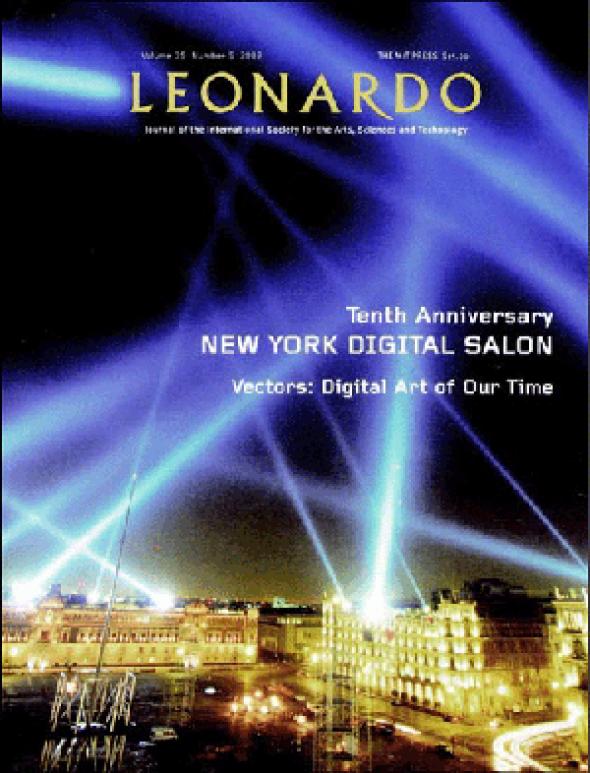Leonardo, New York Digital Salon Issue
Who in their right mind would spend $15 on buying this bit of high-gloss digi-art PR? Give me Condè Nast Traveller any day of the week. At least with the Traveller you get to wash down your dose of lifestyle ideology with pictures of perfect teeth and high-cut bathers, and at half the price probably.
Just like the resale of old cars in Auto Trader, the New York Digital Salon has invited a handful of curators, musicians, writers and the like to recycle recent history yet again in this variant industry trade-mag. History appears as a constant rotation of the same events – this weary repetition turns once interesting works into clapped out bangers with too much mileage on the clock.
In an exercise of vacuous relativism, and so as to avoid the risk of actually coming up with their own perspective on matters artistic and technological, the NYDS invited ten curators to select ten artworks. You guessed it – the world’s most toppest tennest people select the world’s hundred bestest digital artworks (mainly, of course, from USA and Europe, the only areas allowed to illustrate the internationalism the journal boasts of). All of which will be displayed in the World Financial Center Courtyard Gallery in New York from this month. Why is it that this flagrant proximity to the corporate world no longer provokes even a glimmer of surprise?
Historical memory, whilst actively repressed by these gestures, is conventionally signified by the nominator’s unvarying inclusion of early works by Nam June Paik or John Cage. The ’80s appears barely to have existed. And the rest, as they say, is history – as we have come to learn it by rote. Well, not quite. Lev Manovich has made a beguiling selection of the ten books that most influenced his thinking on digital culture and whose scanned covers, with their traces of touch and use, emit something surprisingly auratic (includes tomes by Friedrich Kittler, Espen Aarseth and Ulf Poschardt). And Steve Dietz quotes some brilliantly disparate historical figures, from J. C. R. Licklider to Richard Wagner. Undoubtedly, many good projects are included here too, but it’s hard to get excited about their deployment in such a trite and inept history – and one that, as Leonardo editor Roger F. Malina insultingly imagines, plays the ‘Stone Age’ to some queasy future stalked by the ‘New Leonardos’.
Leonardo, Vol. 35, number 5 // 2002 // MIT // $15
Leonardo’s special anniversary issue was part of Vectors: Digital Art of Our Time, a festival of events, exhibitions and talks co-programmed by the World Financial Center Arts & Events Program and New York’s Digital Salon, whose tenth anniversary it celebrated. [http://www.sva.edu/salon/salon_10/index.php]
Mute Books Orders
For Mute Books distribution contact Anagram Books
contact@anagrambooks.com
For online purchases visit anagrambooks.com








